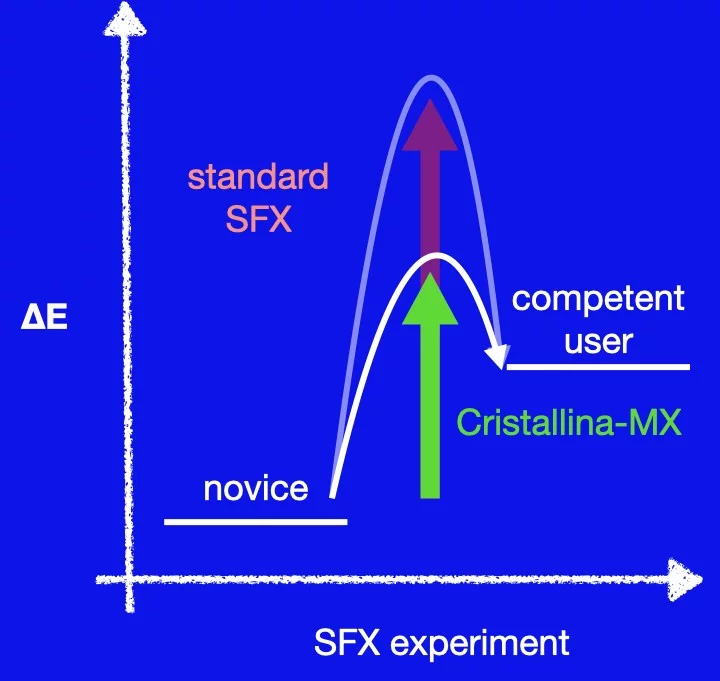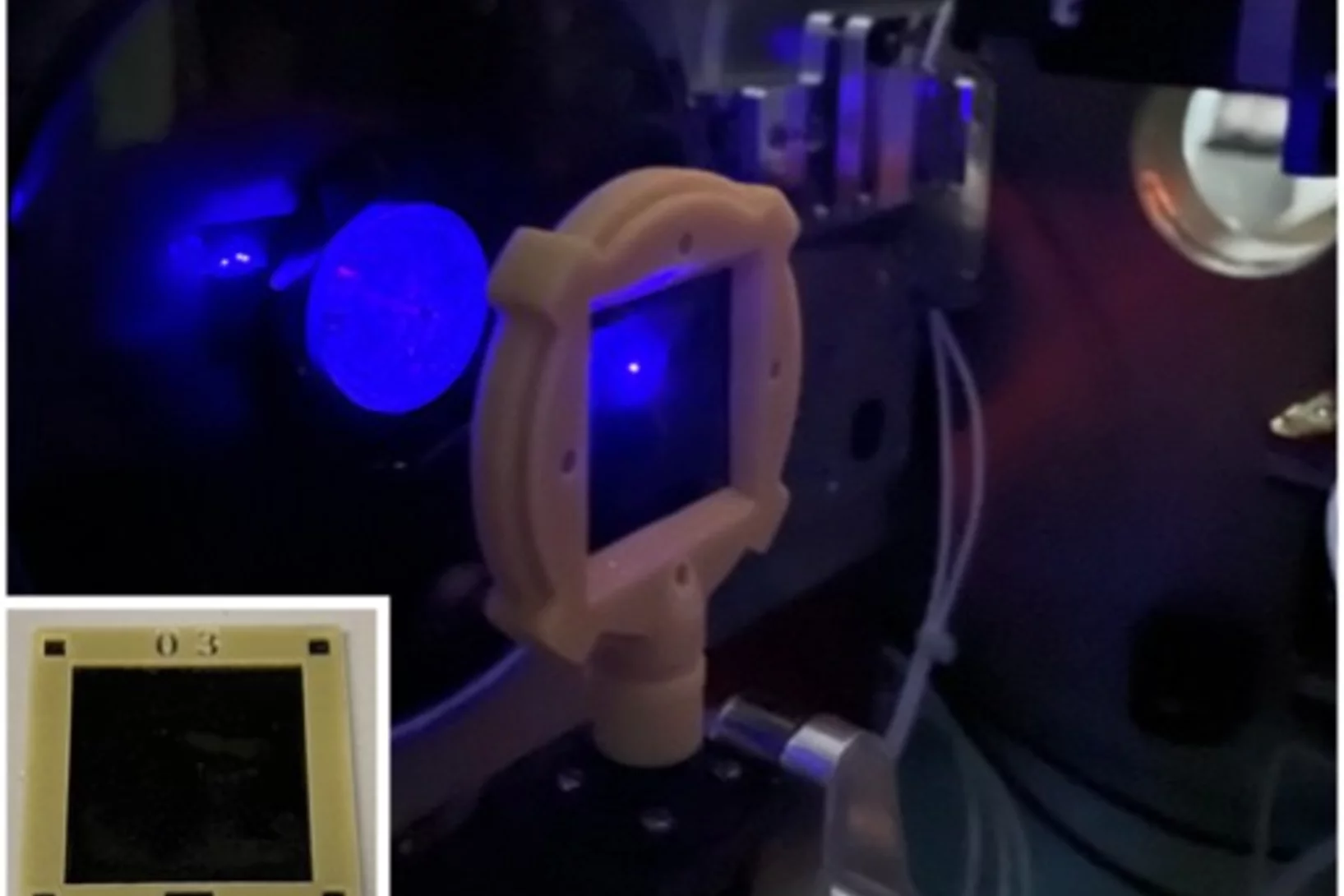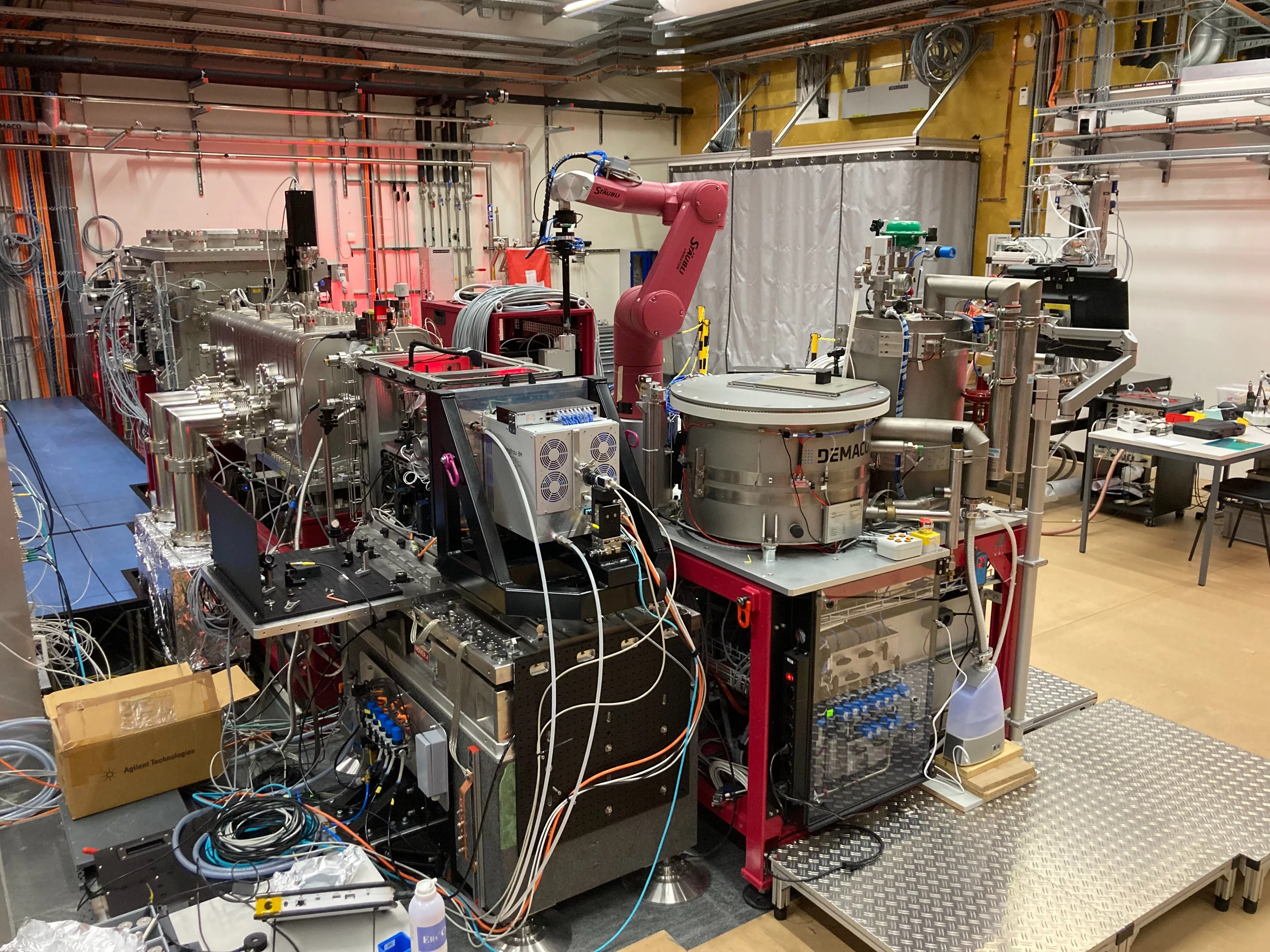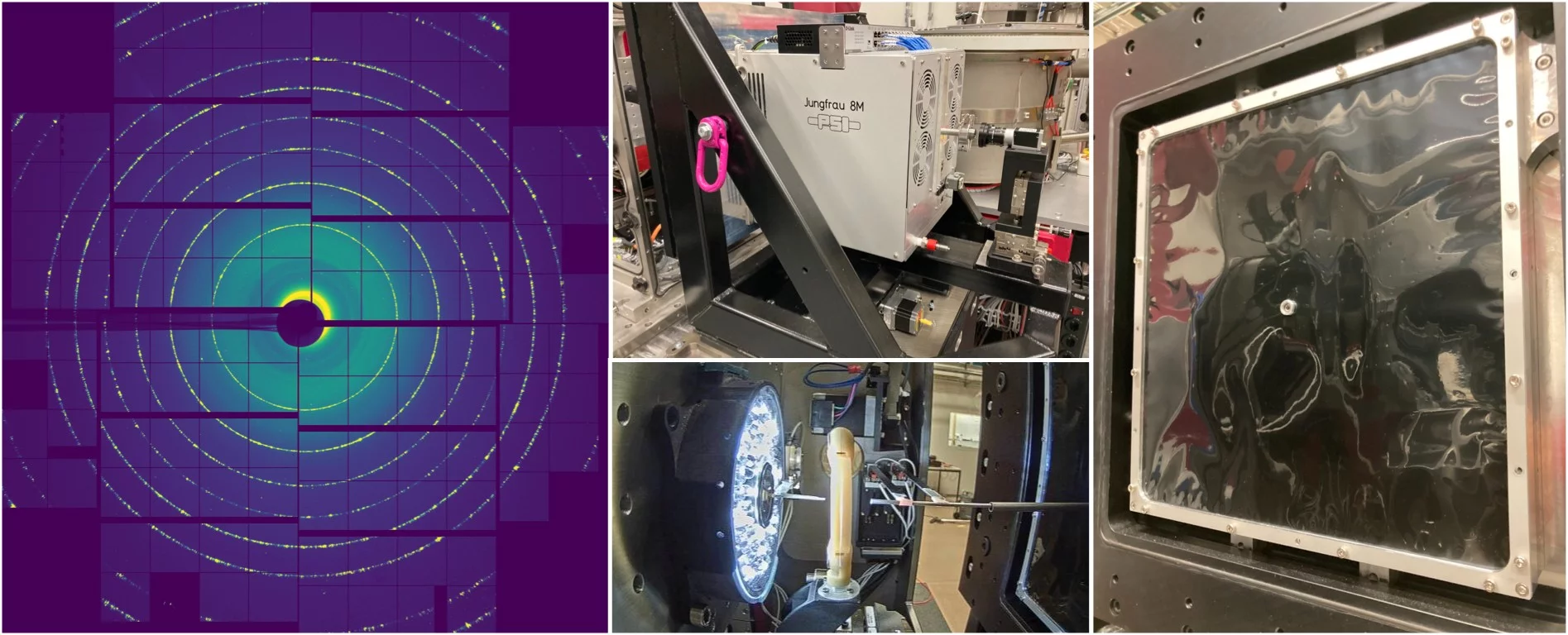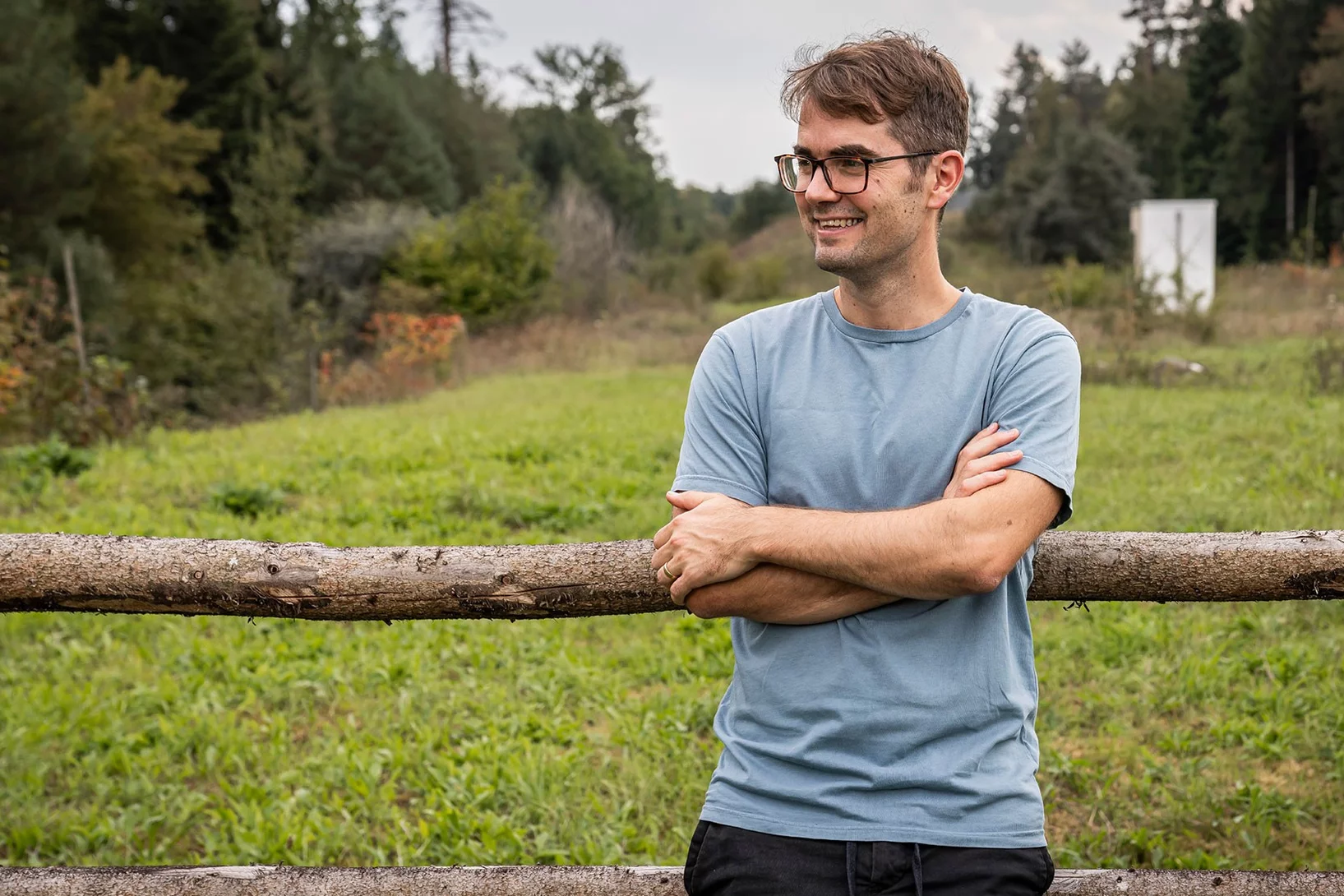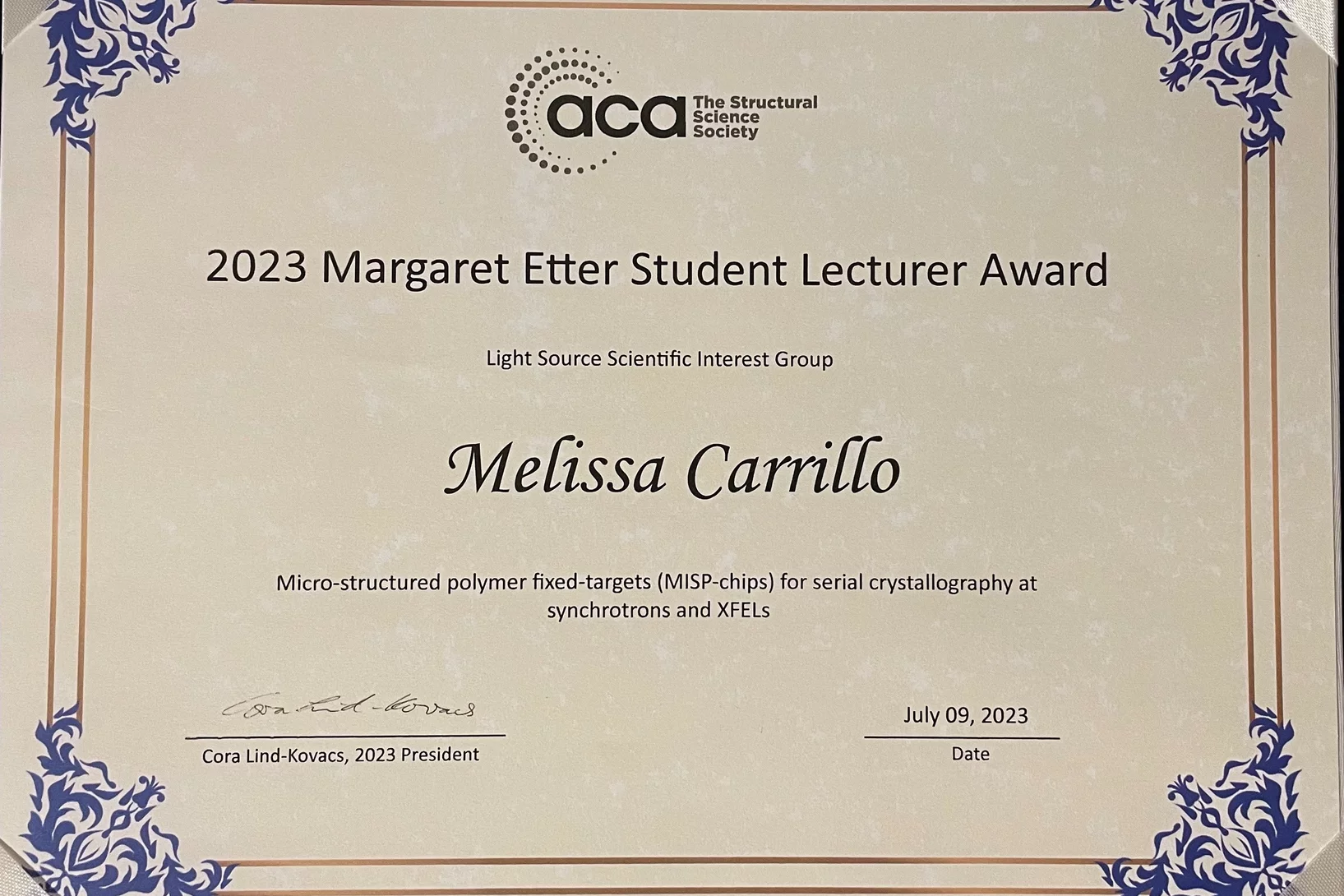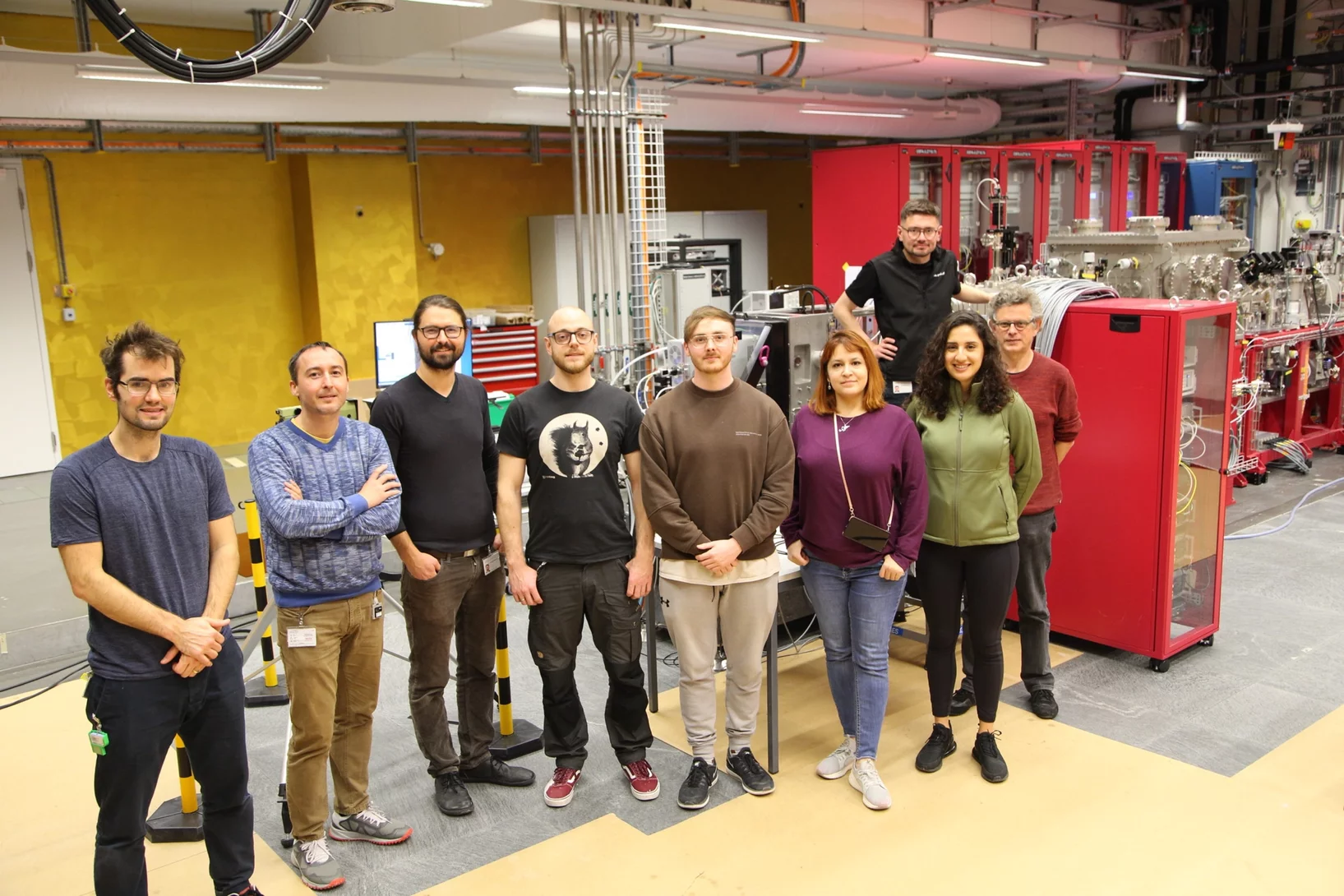The Cristallina-MX Instrument welcomes users. Calls for experiment proposals end in March and September. Please visit the call website for details on the upcoming call.
The goal of the CristallinaMX (CrMX) project is to decrease the barriers to new and non-specialist users wishing to practice SFX. To this end, the project is focused on providing dedicated SFX instrumentation such that users should be able to come armed only with sample and leave with data. Ultimately, the project aims to offer separate sample delivery environments for specific methods. To this end, the first sample-environment the CrMX project has commissioned is called SwissMX (Serial WIth Solid-Support MX), a fixed-target station designed for high-throughput SFX and SFX pump-probe. Other sample delivery systems will gradually be introduced and commissioned but shared common infrastructure such as pump-lasers and detectors.
Sample delivery systems
Common Infrastructure
Each of the sample delivery systems will use common infrastructure and these are detailed below.
SwissMX endstation
The SwissMX (Serial WIth Solid-Support MX) was originally designed as a fixed-target SFX endstation for high-throughput SFX and SFX pump-probe measurements. The endstation is composed of two pieces of instrumentation: the sample chamber and TELL sample changer. Together these enable the rapid rastering of large area fixed-targets and their prompt exchange using an adapted TELL robot system. The fixed-targets that SwissMX typically support are: the PSI MISP (MIcro-Structured Polymer) chip (Carrillo et al., 2023) and the Max Plank Institut (MPI) SOS (Sheet-On-Sheet) chip (Doak et al., 2018), although other targets such as the Oxford (Horrell et al., 2021) and HARE chips (Mehrabi et al., 2020) could also be used.
High-viscosity extruder (HVE) (Weierstall 2014) based delivery has now been successfully commissioned for SFX and SFX pump-probe and will be available for users for the 2025-I call in September 2024.
JUNGFRAU Detectors
Cristallina-MX has an 8 Mpixel JUNGFRAU detector for forward diffraction measurements that is suitable for both in-air and in-He measurements. The panel arrangement of the detector gives a near complete scattering radius of 125 mm and minimises areas lost in the outer corners. The detector is mounted on a 180 mm translation stage so that the entire detector face can be utilised for diffraction measurements. For in air measurements, scatter guards before and after the sample position catch the incident beam and shield it to the detector. The table below indicate the resolutions at 12 and 10 keV reachable at different detector distances.
approximate detector distance (mm) | resolution (Å) at | |
| 12.0 keV | 10 keV | |
| 110 | 1.25 | 1.50 |
| 135 | 1.42 | 1.70 |
| 185 | 1.76 | 2.12 |
| 210 | 1.95 | 2.34 |
| 285 | 2.52 | 3.02 |
Nano-second pump-laser
Cristallina-MX has access to a nanosecond Optical Parametric Oscillator (OPO) from EKSPLA (#model NT230-100-SH/SF-ATTN/FC). The pulse width has been measure to 3.2 ns at 100 Hz, 450 nm with an RMS of 3.8 %. The laser is now located in the Cristallina hutch and can either be through-space or fibre coupled to the SwissMX endstation. The pulse energy and profile at the sample position will vary depending on the coupling method used. The typical sample focus used in an SFX experiment will be 30 x 30 µm2 (1/e2) but this will be measured at the beginning at each experiment.
Current Cristallina-MX News and Highlights
SwissFEL leuchtet für industrielle Anwender
Dank Hochdurchsatzexperimenten können neue Nutzergruppen aus der Strukturbiologie vom XFEL-Licht profitieren.
Congratulations to Melissa Carrillo for winning the 2023 Margaret Etter Student Lecturer Award at the ACA in the Light Sources Category
Melissa Carrillo is a PhD student under the supervision of Dr. Celestino Padeste from the Laboratory of Nanoscale Biology at PSI. Through a collaboration with the Laboratory for X-ray Nanoscience and Technologies, they are responsible for the design and production of the polymer fixed-targets used by the SwissMX endstation at Cristallina. We whole hearted congratulate Melissa for her receipt of a 2023 Margaret Etter Student Lecturer Award at the recent American Crystallography Association Meeting for her work on these polymer supports!
First pump-probe SFX commissioning beamtime at Cristallina
Professor Przemek Nogly and his team from Jagiellonian University Kraków were kind enough to give their time and samples to assist the Cristallina-MX team in the commissioning of the SwissMX fixed-target endstation for pump-probe experiments.
